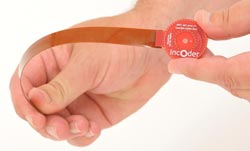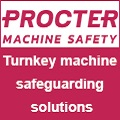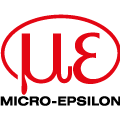
Posted to News on 19th Aug 2010, 17:10
Novel inductive sensors can be shaped to suit the application
Mark Howard of Zettlex Ltd explains how next-generation inductive transducers work and why they are being specified in place of traditional inductive devices, potentiometers, optical encoders and magnetic encoders.

Inductive position transducers such as resolvers and linear transformers have been the preferred choice for use in harsh environments and safety-critical applications for more than 50 years. However, a new generation of inductive transducers is now gaining in popularity.
Linear inductive position transducers are normally referred to as variable reluctance or linearly variable differential transformers (LVDTs). Rotary transducers using the same technology are known as synchros or resolvers. They all work on the inductive or transformer principles first discovered by Michael Faraday in the 1830s. Both linear and rotary forms have been used in the industrial, aerospace, defence, oil and gas sectors since World War II.
Inductive position transducers have a well-deserved reputation for reliability in difficult environments, which might include harsh vibration, shock, extreme temperatures, extreme duty cycles, aggressive chemicals, electromagnetic noise, radiation or applications where extended life is required. Many safety-related applications will only consider inductive transducers for this reason.
Typical applications therefore include motor controls, actuator servos, rotary or linear displacement measurement in military equipment, aircraft, heavy industrial plant, agricultural vehicles and industrial process equipment.
How traditional inductive transducers work
A typical inductive position transducer has at least one - but usually several - wire spools or windings. When the windings are energised with an AC signal they form a local electromagnetic field. The field is modified by either relative movement of the windings or movement of a magnetically permeable/conductive element usually referred to as an inductive target. The field change is proportional to displacement.
LVDTs use at least three wire spools: a primary and two secondaries arranged around a central rod. As the rod moves, it varies the electromagnetic coupling between the primary and secondary spools. The ratio of the signals induced in the secondary windings indicates the position of the rod relative to the spools. This ratiometric technique is an important aspect of the LVDT's high stability and measurement performance. Resolvers work in a similar fashion but in a rotary rather than linear arrangement.
Why inductive transducers work so well
A key aspect of inductive transducer operation is that they are non-contact devices. This means that, unlike potentiometers, there are no electrical contact points to wear out or fail due to the ingress of contaminants. The fundamental interaction between the sensing parts of a traditional inductive transducer is electromagnetic and so the sensor is highly insensitive to environmental conditions.
If one were to submerge most optical or capacitive transducers in muddy water they would pretty quickly fail. The optical sensors would be obscured by the foreign matter and the capacitive sensor would be unable to differentiate between foreign matter and the capacitive target. On the other hand, an inductive sensor would not notice and would carry on working as if nothing had happened.
Whereas optical, capacitive and magnetic sensors require electronic circuitry adjacent to the sensing point, the electronics for an inductive transducer can be located remotely. This enables the transducer element to be located in harsh environments with the usually more delicate electronics located in a more benign environment.
Why not use traditional inductive sensors everywhere?
A clue is given by the types of industry sectors that use them most - military, aerospace, heavy industry, oil and gas. Typically in these sectors, performance and reliability are the primary selection factors, with cost being a secondary issue. These sectors are also technically sophisticated and the deployment of traditional inductive sensors requires some expertise because they need AC energisation and signal processing.
Size and weight are important factors for many applications and most traditional inductive transducers are fairly bulky and heavy. For example, an LVDT to measure 100mm will be almost 300mm long at full stroke. On top of that is the space and cost required for the signal generation and processing circuitry. As a rule of thumb, for every 1 spent on the actual transducer, a further 1 will be needed for the signal processing.
The net result is that traditional inductive transducers are often too expensive, too large or too heavy for many mainstream applications.
Next-generation inductive transducers
Over the last six years, a new generation of inductive transducer has emerged, which is attracting business away from traditional inductive devices, potentiometers, optical encoders and magnetic encoders. This trend has been helped by engineers drifting away from optical encoders having learned the hard way that these are simply not robust enough for tough environments.
The new generation of inductive sensors uses the same fundamental physical principles as traditional inductive sensors but, rather than bulky spools of wire, these new sensors utilise printed circuits on flexible or rigid substrates. Using laminar constructions means the new sensors are less bulky, less costly and lighter - which are precisely the factors that have limited the use of traditional inductive transducers.
An example of this new generation of inductive devices is the IncOder (from 'Inductive encoder') range of angle encoders from Zettlex. The design is elegantly simple: two flat rings, one that rotates and one that is stationary. The stationary part receives DC power and delivers absolute digital data of up to 16 million counts per revolution. There are no contacts, no bearings, no seals, no precision installation and no need for maintenance.
Design freedom
From the design engineer's perspective, this new generation of position sensor means much greater flexibility, as the designs can be readily tailored to match specific application requirements. Almost any shape can be accommodated, from miniature rotary devices to linear, curvilinear, 2D and 3D shapes. If specified early in the design phase, design engineers can eradicate the need for shafts, bearings, seals, couplings and housings - thereby further reducing cost, weight and space.
EMC performance is generally as good as that of resolvers or LVDTs. Indeed, new-generation inductive devices are being selected for safety-critical aerospace and military applications, where the ability to design the sensor for tight space and weight constraints has proven to be a significant factor.
Also, because the new-generation inductive devices have been developed in the 21st century, the choice for their associated electronics is 21st century. This means there is no need for separate signal conditioning electronics; instead, simple on-board electronics are used to receive power and to generate high-speed position data in SSI, SPI, A/B pulses, CANbus or other formats. Analogue outputs can also be generated including 0-5V, 0-10V and 4-20mA.
Geometrical freedom
The transition to printed, laminar forms brings other advantages:
- Any shape you like: a huge range of form factors, from tiny rotary devices to long linear, 2D and 3D shapes.
- Flexible and compliant: down to just 0.1mm thick.
- Greater measuring range: from microns to metres.
- Greater measurement performance by eliminating inaccurate winding processes.
- High resolution and stability (eg 24 bits for a 50mm device).
- Complex measurement geometries such as roll, pitch and yaw sensing.
- Multiple sensors can be located in the same space by using multi-layer circuit boards (eg redundant sensors in safety-related applications).
- Certification for intrinsically safe environments (ATEX) is readily achieved since all the electronics can be epoxy potted.
As with all emerging technologies, the change from old to new is a gradual one. Nevertheless, the change is already well underway with tens of thousands of new-generation inductive position sensors already in use on land, sea and in the air - from industrial process controls and maritime radars, to aileron control in unmanned aerial vehicles.
For more information on Zettlex's new generation of inductive position sensors, go to www.zettlex.com.
Want the latest machine building news straight to your inbox? Become a MachineBuilding member for free today >>

















